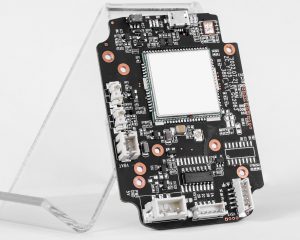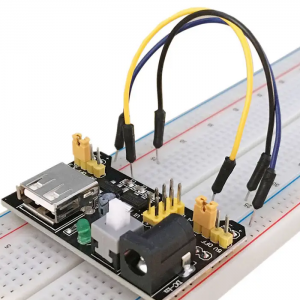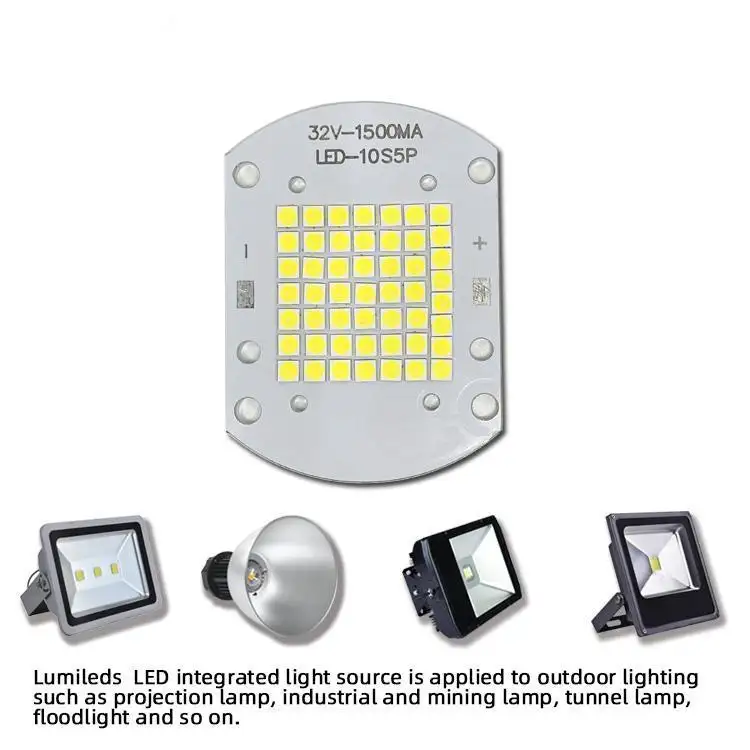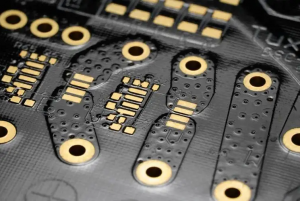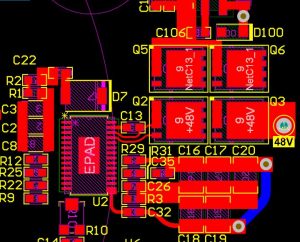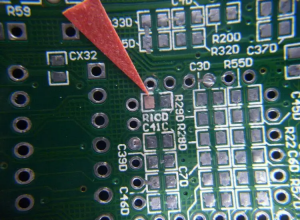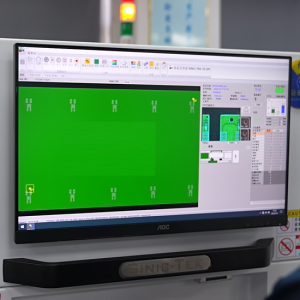In circuits, resistor act as voltage dividers. When different voltage levels need to be obtained from a power supply, voltage distribution can be achieved by connecting resistors in series. Specifically, the magnitude of the voltage will be distributed in proportion to the magnitude of the resistors. And resistors have no polarity. Resistors are passive electronic components. Their purpose is to provide fixed or variable resistance to the flow of current, regardless of the direction of the current.
What is a resistor?
A resistor is a current-limiting element that is used to limit the magnitude of the current through the branch to which it is connected. â
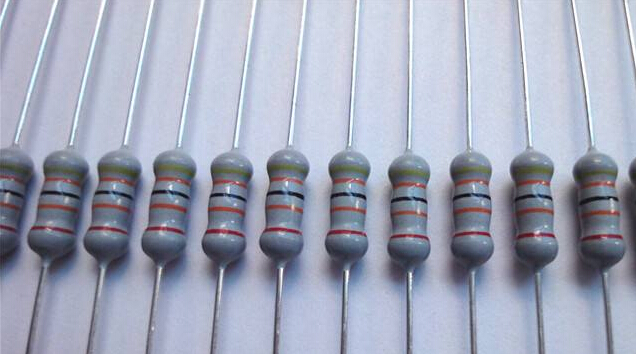
Resistors are a basic electronic component whose function is to hinder the flow of current. The resistance value of a resistor is fixed and generally consists of two pins. It is used to divide voltage, adjust signals, stabilize and adjust current and voltage in circuits.
Depending on whether the resistance value is variable, resistors can be divided into fixed resistors and variable resistors (potentiometers). The resistance value of a fixed resistor cannot be changed, while the resistance value of a variable resistor can be changed by adjusting the contact position. An ideal resistor is linear, that is, the instantaneous current through the resistor is proportional to the applied instantaneous voltage.
Resistors play an important role in circuits, whether as voltage dividers, current limiters, or in regulating the voltage and current in circuits.
How to identify resistor polarity?
Resistors are generally non-polar. Resistors are mainly used in circuits to limit current, divide voltage, shunt, etc. Their physical properties are completely determined by the materials used inside. Their main functions are voltage division, current shunting, current limiting, voltage reduction, impedance matching, etc. They do not care about how they are placed, so any type of basic resistor is non-polar.
Although in electrical analysis, people may assume that resistors have polarity to more intuitively understand the flow of current, this does not mean that resistors themselves have polarity. In fact, resistors can be regarded as a kind of extremely powerful wire with a specific power rating and resistance, and its function is to hinder or reduce current in both directions.
When identifying resistors, it is usually not necessary to consider their polarity because resistors do not have a fixed positive or negative pole. If you need to determine the direction of the current, you can judge it by the circuit symbol or other identification, but this has nothing to do with the polarity of the resistor itself.
Do any resistors have polarity?
Not all resistors have polarity. â
A resistor is an electronic component whose main function is to block the flow of electric current. In most cases, resistors themselves have no polarity, which means that both ends of the resistor can be considered as positive or negative potential. There are many types of resistors, including fixed resistors, adjustable resistors, and various sensitive resistors, but they do not have positive and negative polarity.
However, there are some special types of resistors, such as type A in the resistor array, which are polarized. But this does not mean that all resistors have polarity, because most resistors are non-polar. For example, type B in the resistor array has no polarity, and other types of resistors (such as C, D, E, F, etc.) have different internal resistor arrangements, but because they are not often used, the resistors usually referred to are generally non-polarized. â
In summary, although there are some special types of resistors that may have polarity, in most cases, resistors are electronic components without polarity. â
Do resistors have a positive and negative side?
Resistors have no positive and negative poles. âResistors are passive electronic components whose main function is to block the flow of electric current without caring about the direction of the current. In the circuit, the direction of the current is indicated by an arrow, and the resistor itself does not change its impedance characteristics due to the change of the current direction.
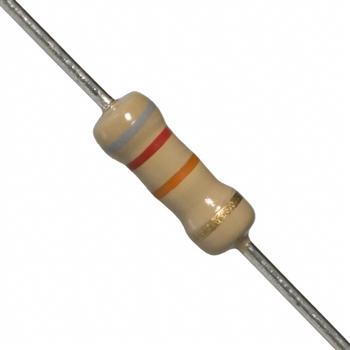
Whether it is a fixed resistor, an adjustable resistor or a sensitive resistor, there is no distinction between positive and negative polarity. In AC circuits, there is no need to distinguish between positive and negative poles. In DC circuits, although the variable resistor is composed of a carbon film and a metal contact, it is necessary to clarify the direction of the current, but this does not mean that the resistor itself has positive and negative poles, but it means that the direction of the current needs to be clarified in DC circuits.
The concept of positive and negative poles is usually used for power supplies, batteries and certain specific components, where the positive pole is usually connected to a high potential and the negative pole is connected to a low potential. Power supplies and batteries have a positive and negative pole because of the potential difference, while resistors, as a passive component, have no potential difference, so there is no distinction between positive and negative poles.
In a circuit, when the power supply is connected, the current flows out from the positive pole, passes through the resistor, and finally returns to the negative pole, forming a current cycle, but this does not change the nature of the resistor itself, but is only part of the current path.
Can a resistor be connected in any direction?
Resistors can be connected in any direction. âResistors are passive devices that do not distinguish polarity, so they can be installed at will without affecting their normal operation.
This characteristic of resistors makes the connection direction of resistors in the circuit very flexible. In addition, the connection direction of resistors is not affected by the direction of current, and even if the current direction changes, the performance and resistance of resistors will not change. Therefore, in practical applications, the connection direction of resistors can be freely selected as needed to meet specific circuit requirements.
Is there a wrong way to install a resistor?
If the welding is not firm or there are problems such as cold welding and short circuit, the resistor will lose connection or become abnormal, which will cause the circuit to work abnormally.
When installing the ground wire, if the grounding resistor is not installed correctly, and the appropriate time and conditions are not selected when measuring the grounding resistance, or the connection wire with the equipment is not disconnected when measuring the protective grounding resistance of the electrical equipment, the measurement results may be inaccurate.
In order to avoid these errors, it is very important to install and test the resistor correctly. When installing the resistor, ensure the welding quality, correctly measure the grounding resistance, and follow the correct installation steps and testing methods to ensure that the resistor can work properly.
How to wire a resistor to an LED?
When connecting a resistor to an LED, the resistor can be connected to the positive or negative terminal of the LED, as long as the polarity of the power supply is connected correctly. â
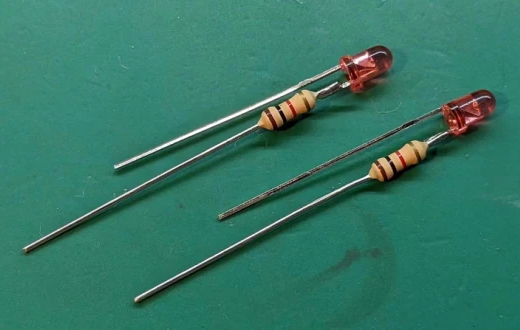
When using a resistor with an LED, the main function of the resistor is to limit the current to protect the LED from excessive current damage. Whether the resistor is connected to the positive or negative terminal of the LED, the key is to ensure that the current limit of the entire circuit is within the range that both the LED and the resistor can safely withstand. Specifically:
âConnected to the positive terminal of the LEDâ: In this configuration, the resistor is connected to the positive terminal of the LED, and the voltage applied to the two terminals of the LED is limited by controlling the current flowing through the resistor, thereby protecting the LED. This configuration is suitable for a variety of power supply voltages and LED types. As long as the polarity of the power supply is connected correctly, the position of the resistor (positive or negative) has little effect on the normal operation of the LED.
âConnected to the negative terminal of the LEDâ: Connecting the resistor to the negative terminal of the LED can also achieve the purpose of current limiting. This configuration also requires that the polarity of the power supply is connected correctly to ensure the safety of the circuit and the normal operation of the LED.
In practical applications, if you encounter the problem of frequent LED damage, it may be due to the quality problem of the LED itself or the circuit design defect.
In short, when connecting a resistor to an LED, the key is to ensure the safety of the entire circuit and the normal operation of the LED. By correctly selecting the position and value of the resistor and ensuring that the polarity of the power supply is correctly connected, the LED can be effectively protected from damage.
Conclusion:
Resistors play a vital role in circuits. They can protect various components of the circuit by controlling the magnitude of the current. With the evolution of products, various types of resistors have been generated, which can change their resistance values ââaccording to changes in the environment. Therefore, resistors are still very important until now. Understanding the role and use of resistors will help us understand circuits.


